 |
 |
 |
| |
Pooled 24-week results of DUET-1 and DUET-2:
TMC125 (etravirine; ETR) versus placebo
in treatment-experienced HIV-1-infected patients
|
| |
| |
Reported by Jules Levin
ICAAC Sept 17-20, 2007, Chicago
P Cahn, R Haubrich, J Leider, G Pialoux, M Schechter, S Walmsley,
J Vingerhoets, M Peeters, G De Smedt, MP de Bethune and B Woodfall
on behalf of the DUET-1 and DUET-2 study groups
AUTHOR CONCLUSIONS
In treatment-experienced patients, including those with NNRTI resistant virus, TMC125 consistently demonstrated superiority over placebo
-- 59% of patients achieved confirmed undetectable VL (<50 copies/mL) with TMC125 plus BR at Week 24
Even in the absence of any other fully active background agents, with TMC125, 45% of patients achieved undetectable (<50 copies/mL) viral load
-- response rates increased as more active agents were used in the background regimen
13 TMC125 resistance-associated mutations (TMC125 RAMs) were identified
-- the greatest added benefit in the TMC125 versus placebo group was seen in patients with <3 TMC125 RAMs
-- 86% patients had <3 TMC125 RAMs
Except for rash, incidence and severity of AEs with TMC125 were similar to placebo
TMC125 has the ability to extend and enhance the NNRTI class and provide a new treatment option for patients with resistance to other NNRTIs
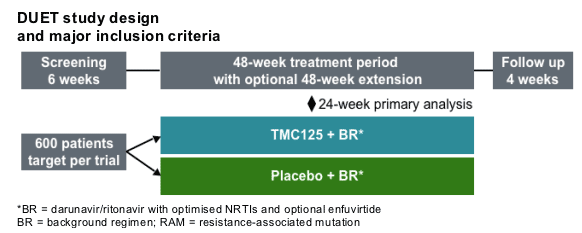
-- DUET-1 and -2 differed only in geographical location; pooled analysis was pre-specified
-- Plasma viral load >5,000 HIV-1 RNA copies/mL and stable therapy for ≥8 weeks
-- ≥1 NNRTI RAM, at screening or in documented historical genotype
-- ≥3 primary PI mutations at screening
-- Patients recruited from Thailand, Australia, Europe and the Americas
Baseline characteristics
and background ARVs
Median baseline CD4 count was 100 and 58% of patients had CDC category C. 65% of patients had 10-15 ARVs of prior ARV use; with 66% having 2 or more detectable NNRTI mutations and 63% having 4 or more primary PI mutations. 46% of patients used Fuzeon in total: 26% used ir de novo; 17% had 0 active background agents; 36-39% had 1 active background agent.
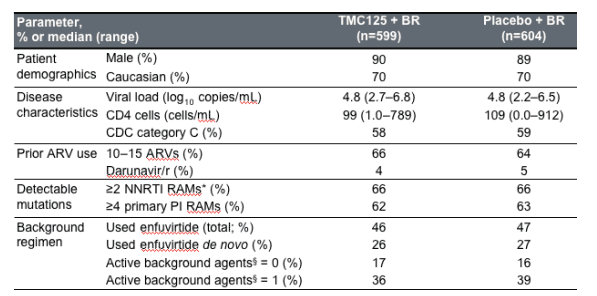
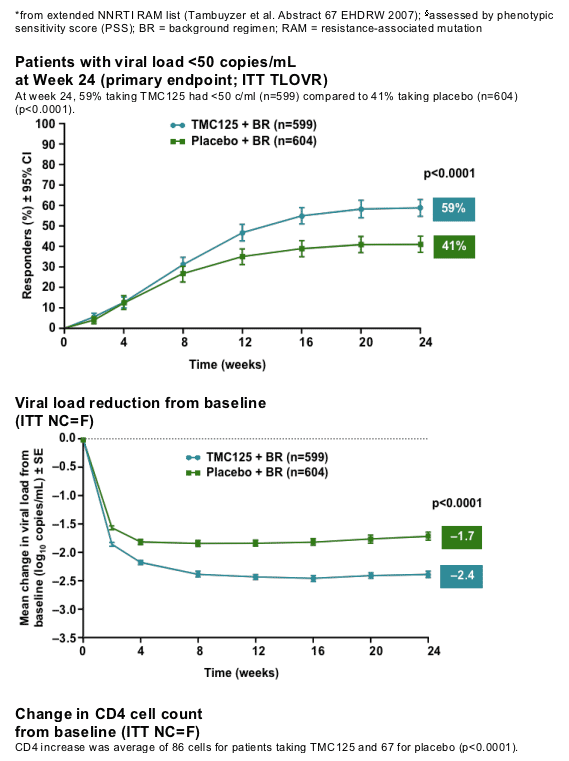
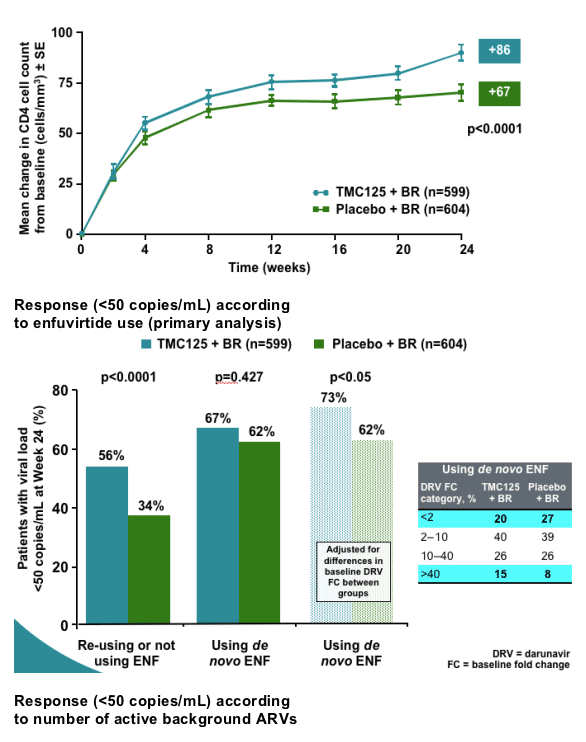
These RAMs seldom occurred in the absence of other NNRTI RAMs
K103N is not associated with resistance to TMC125
A decreased response was defined as ≦75% of the response for patients with zero NNRTI RAMs at baseline from the extended NNRTI RAM list; RAM = resistance-associated mutation

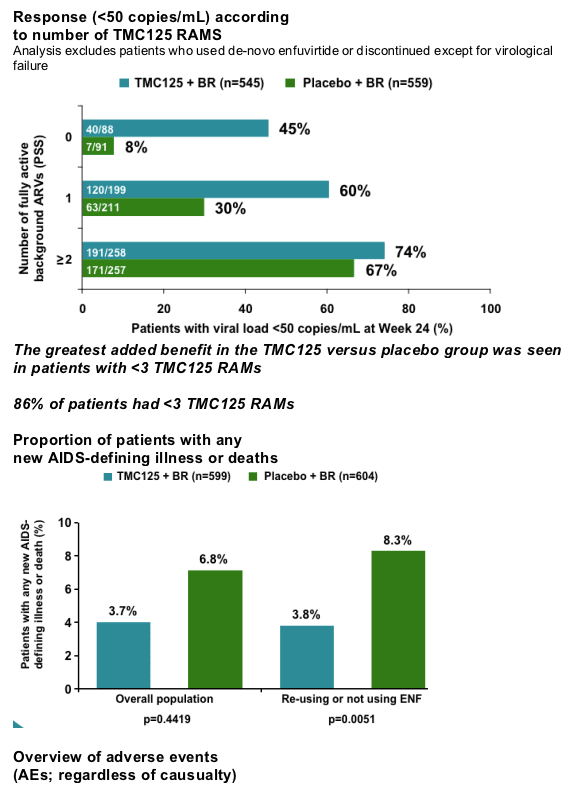
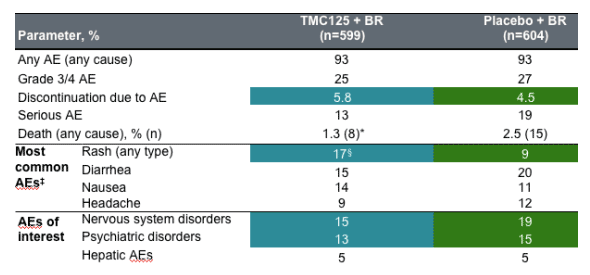
--There were no consistent or clinically relevant trends in laboratory, vital signs or ECG data
--The profile of laboratory abnormalities, including hepatic and lipid parameters, was generally similar between the TMC125 and placebo groups
*no deaths in the TMC125 group were considered at least possibly related to trial medication;
in >10% patients in either group, excluding injection site reactions;
§p=0.0001 vs placebo
Summary of rash in the TMC125 group
-- Overall incidence: 17% in TMC125 group versus 9% in placebo group (p=0.0001)
-- Early onset: most frequent in 2nd week of therapy; median onset Day 12
-- Short duration: median duration 11 days
-- Usually mild to moderate severity: 1.3% grade 3 and no grade 4 events
no rashes with mucosal involvement
Infrequently lead to discontinuation
-- 2.2% of patients permanently discontinued
-- most self-limiting with continued treatment
--Higher incidence in women, but no clear difference in severity or treatment discontinuations according to gender
--No association with baseline CD4 cell count
--No increased risk in patients with a history of NNRTI-related rash
|
| |
|
 |
 |
|
|